2-Digit Addition and Subtraction (with Purpose and Meaning)
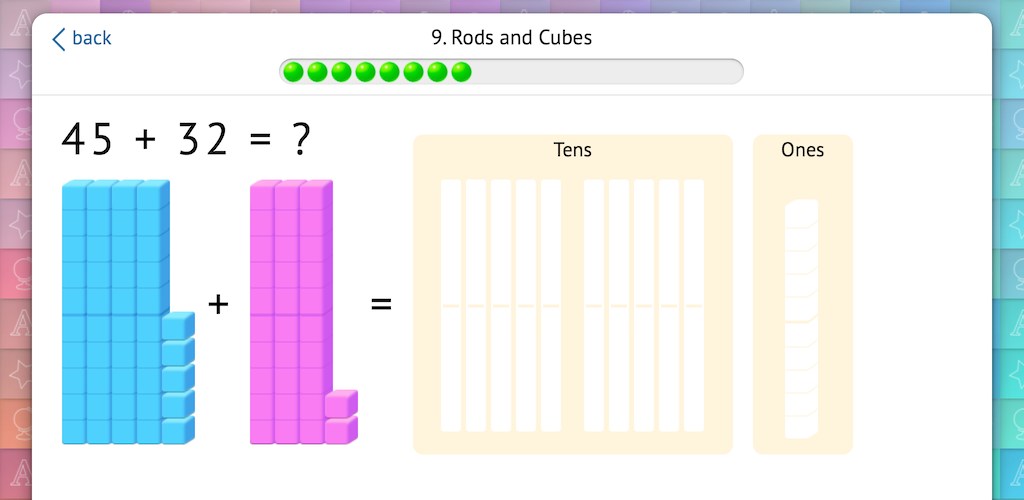
Adding and subtracting 2-digit numbers is a complex task that involves a combination of skills. Acquiring this ability doesn’t happen by accident: it starts with building a solid understanding of 2-digit numbers, pulls in the ability to use place value understanding, and culminates in using properties of operations to add and subtract. It’s an extremely important goal (and not the easiest one) as fluency with multi-digit numbers will build upon this knowledge.
Throughout Happy Numbers, we build students’ numeracy skills in three areas to scaffold learning:
1. Number sense and place value
2. Working with round numbers
3. Adding and subtracting 2-digit numbers
These stages prepare students to successfully add and subtract 2-digit numbers, and to understand the meaning behind the math.
In this post, we’ll walk you through some of the exercises we use to build understanding in these three areas and we’ll give you an in-depth view of the learning behind them. So, let’s dive into the world of number sense and see how the fusion of technology and pedagogy can help your students master mathematics!
Stage 1: Number Sense and Place Value
In order to add and subtract 2-digit numbers with understanding, students need a solid foundation of number sense and place value. Then, they’ll be ready to learn that adding 20 + 50 is as easy as adding 2 + 5 (while understanding conceptually the difference between 20 + 50 and 2 + 5). Beginning in first grade, Happy Numbers reinforces the concept of a “ten” and how to use place value to add or subtract ten or one.
For example, this exercise uses a hundred chart and a fun game-like objective of feeding the bunny to reinforce those skills:
For example, this exercise uses a hundred chart and a fun game-like objective of feeding the bunny to reinforce those skills:

We lead students on a winding path to the bunny’s cave, prompting them to fill in missing numbers. To do so, they must understand the organization of the hundred chart and also be able to add or subtract 1 or 10 from any position on the chart:

In another version of the hundred chart, a figure climbs a ladder from one window to another to represent adding and subtracting tens. First, students identify the number on which he lands:
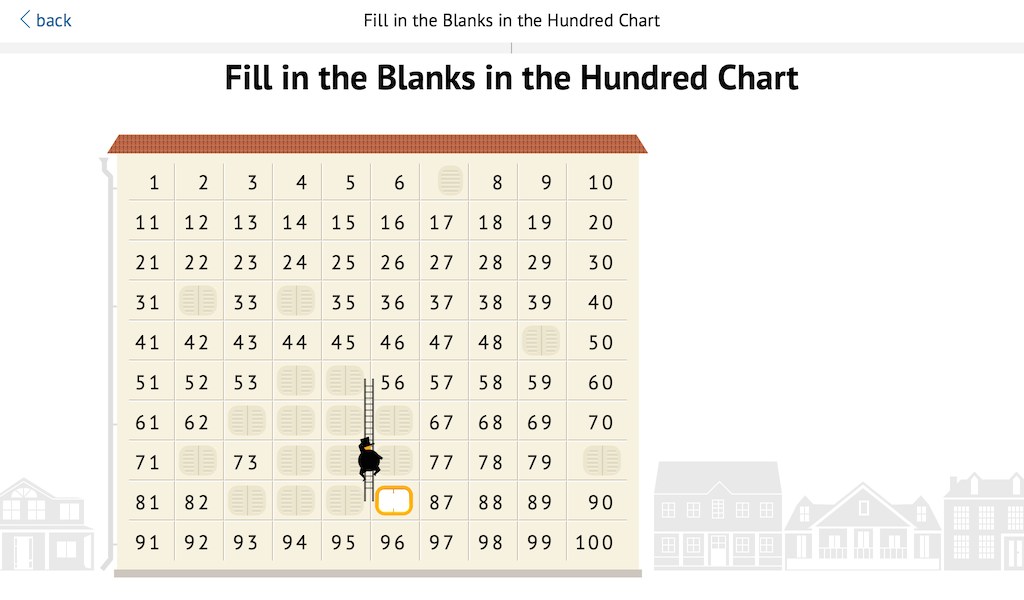
At first, students are provided with many surrounding numbers on the chart. As they advance in this exercise, we remove numbers to present more of a challenge:
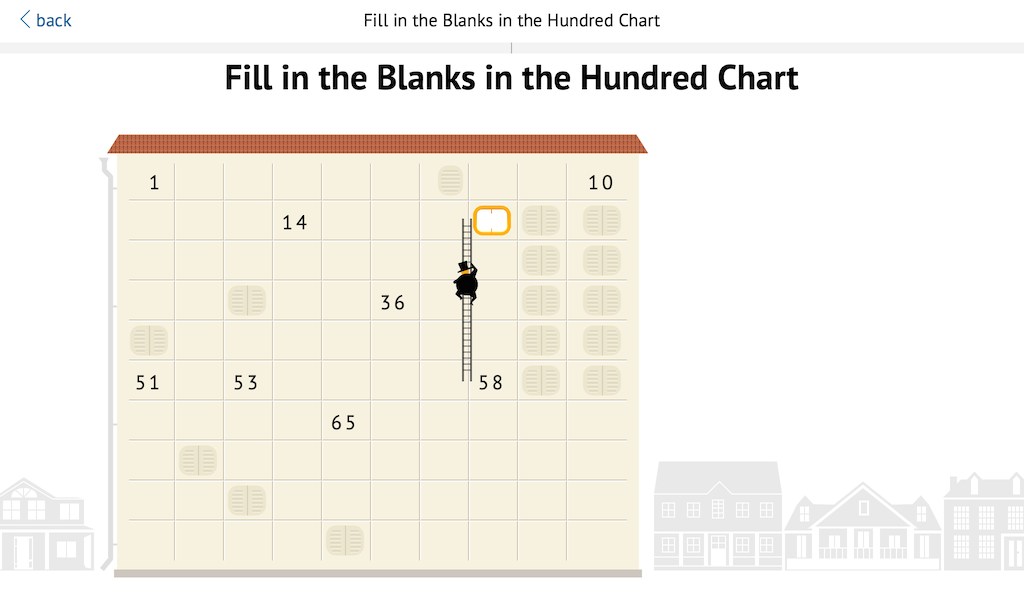
Once students know the starting and ending point, they complete the related equation by providing the round number represented by the climb:
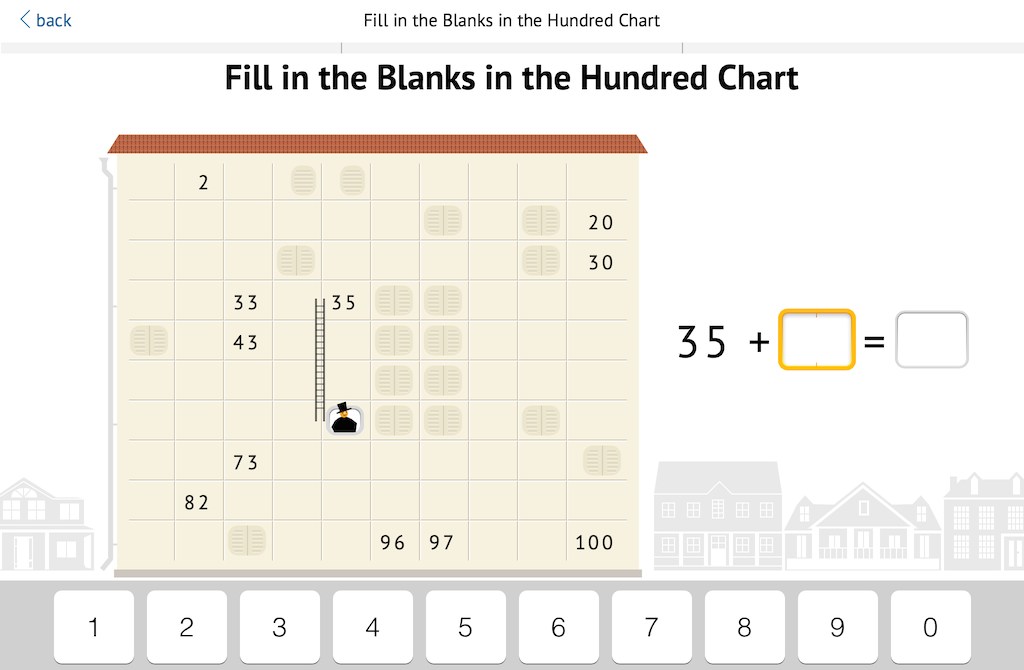
Other exercises direct student focus to the ones place, like this one that uses base-10 blocks to represent addition of a 1-digit number to a 2-digit number. This exercise has the additional benefit of preparing students to work with round numbers.
Students determine the missing addend needed to reach a round number:
Students determine the missing addend needed to reach a round number:

This modeling builds familiarity with algebraic expressions, which is important for conceptual understanding:

If students answer incorrectly, a highlighted stack of pink cubes appears, cueing them as to the missing number:

Once students demonstrate mastery with the support of a model, we transition to using equations only:

Happy Numbers continues to monitor student responses, providing the model once again if an error is made:

This is similar to the way a teacher would scaffold a lesson by providing or removing support, yet Happy Numbers is able to do so on an immediate, individual basis.
Once students have mastered adding to reach a round number, we provide a similar exercise that requires students to both add and subtract to reach the nearest round numbers:

This exercise provides students with a number line for support if they make an error. Students first place the ball on the number line (a task with which they are familiar from earlier exercises):

and then determine the number to add or subtract:

Arrows and prompts help guide students in determining the correct answer, just the way a teacher would if working one-on-one with the student.
The same support occurs for errors with subtraction, using familiar colors and symbols:

The equations alternate the placement of addition and subtraction so that students learn to pay attention to the signs:

The random presentation of + or -, along with the immediate support for errors, keeps students engaged as they build confidence with this task. And again, using a number line as a model extends their understanding of the task and number sense.
When they are ready, we increase the difficulty by removing one digit from the round number:

This small change challenges students to exercise number sense in determining the next higher or lower round number. Again, the support of a number line is provided any time a student needs it. Eventually, students realize that the missing digit is easy to figure out because they are always adding or subtracting a 1-digit number. This exercise puts students in a slightly “non-standard” situation, which is very useful for conceptual understanding and problem solving.
Stage 2: Working with Round Numbers
We begin with an exercise that focuses on addition or subtraction of two round numbers. It is a simplified version of 2-digit addition/subtraction that is easily modeled with cubes to build understanding. In order to prepare students for more challenging tasks, we approach this exercise in steps.
Step 1 begins with an equation and its model, which students complete to solve the exercise:
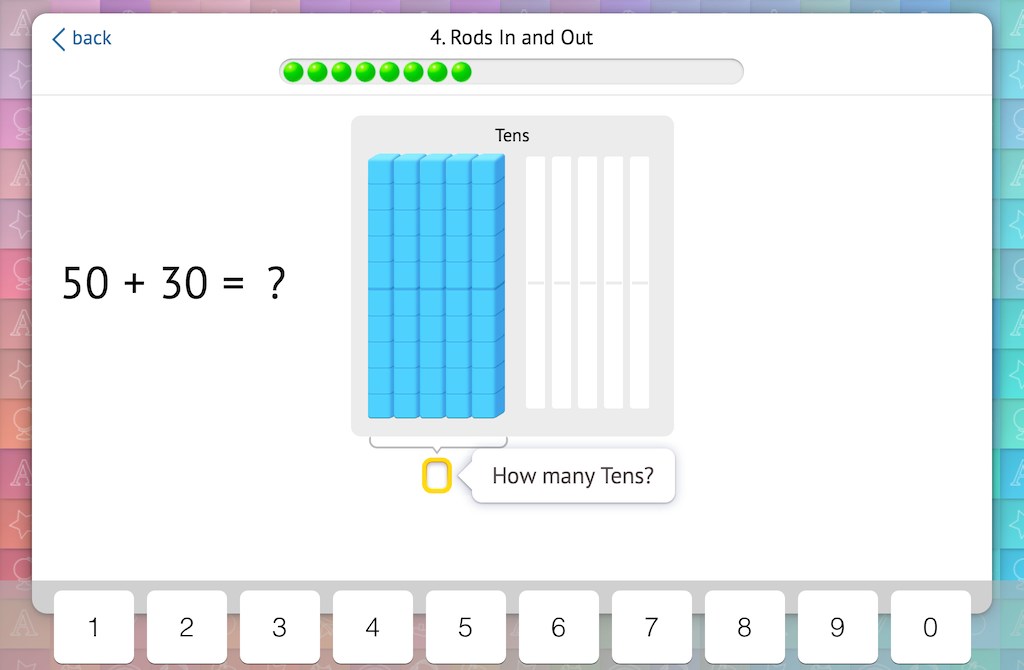
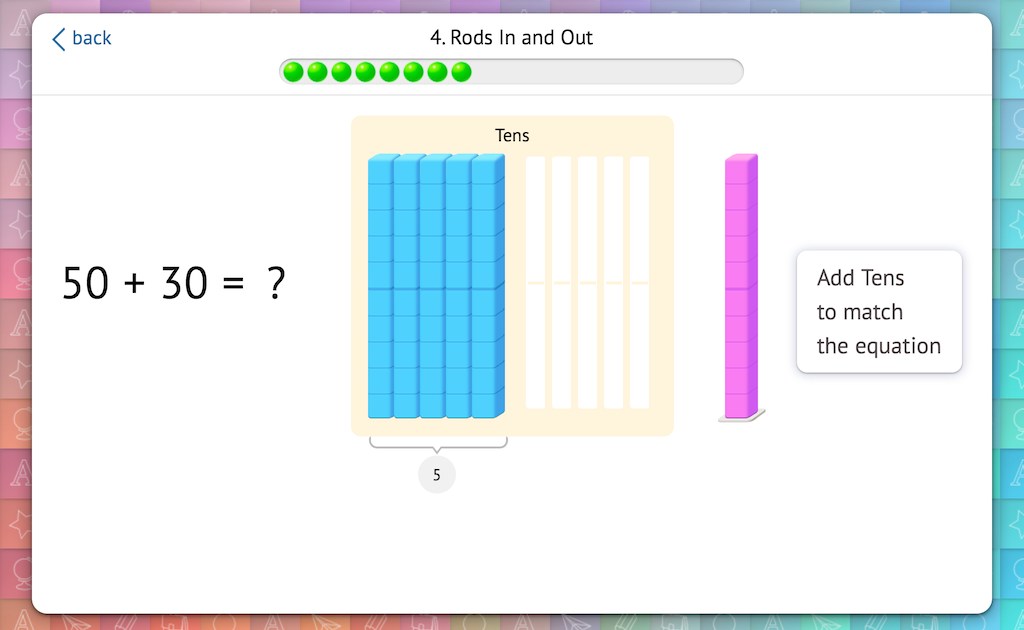
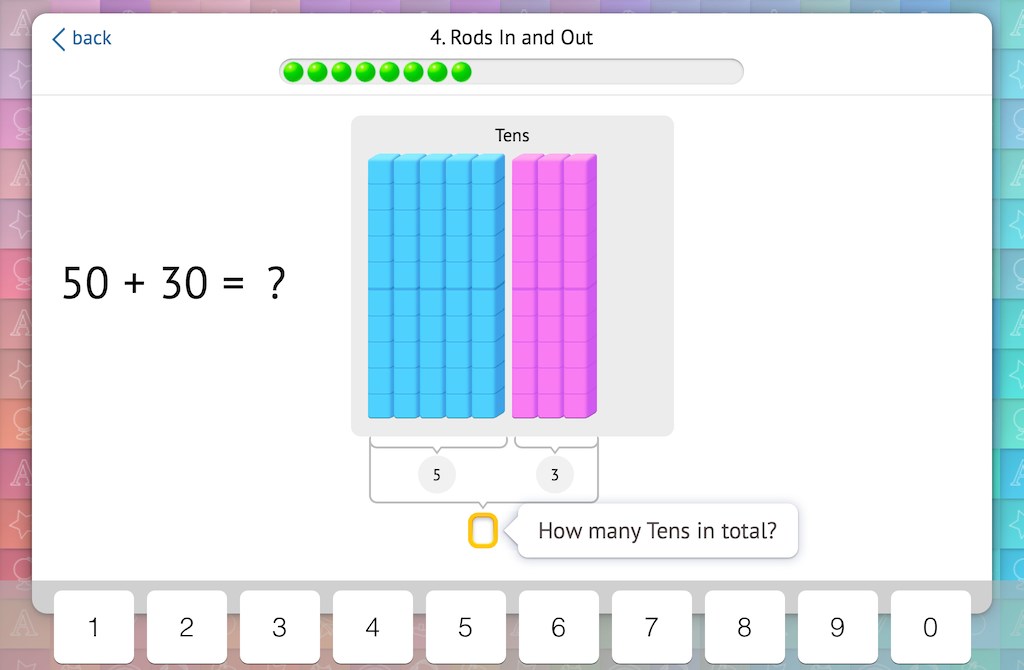
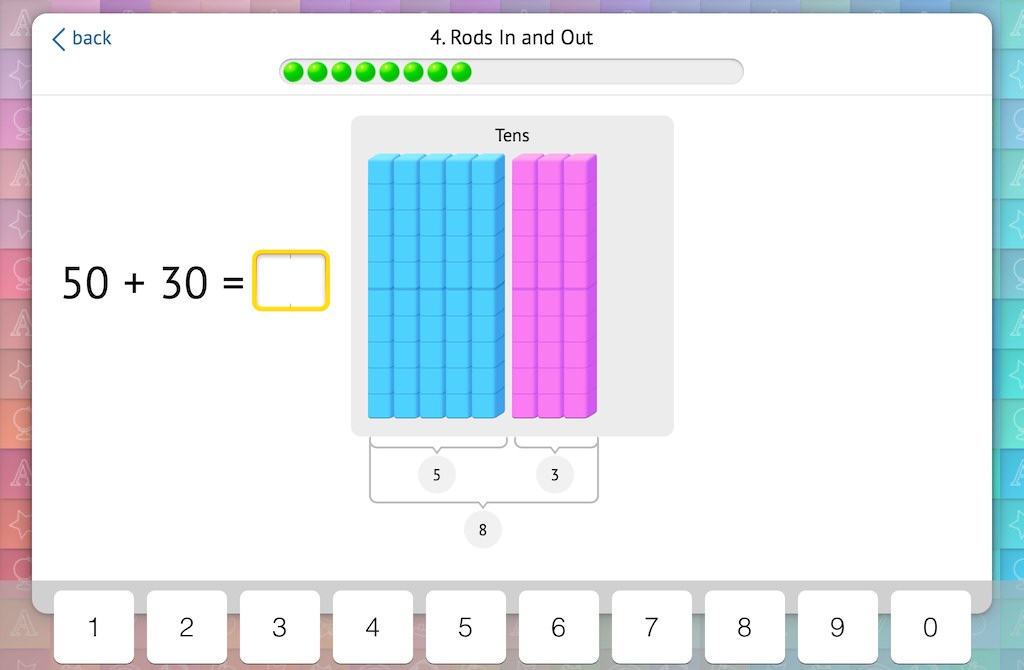
Step 2 continues this understanding by modeling subtraction in a similar way:

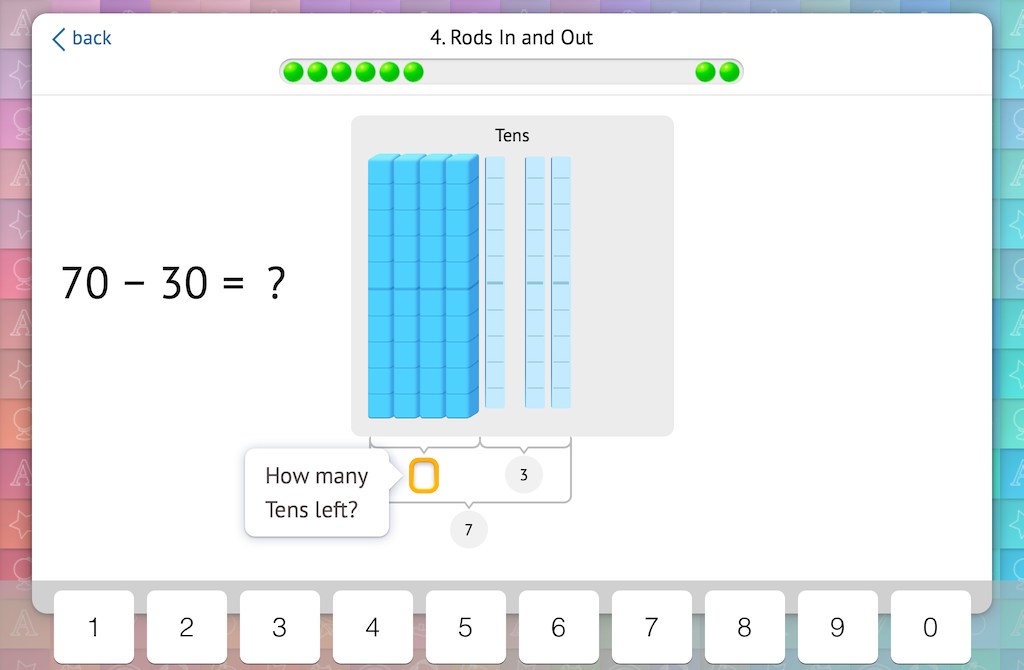
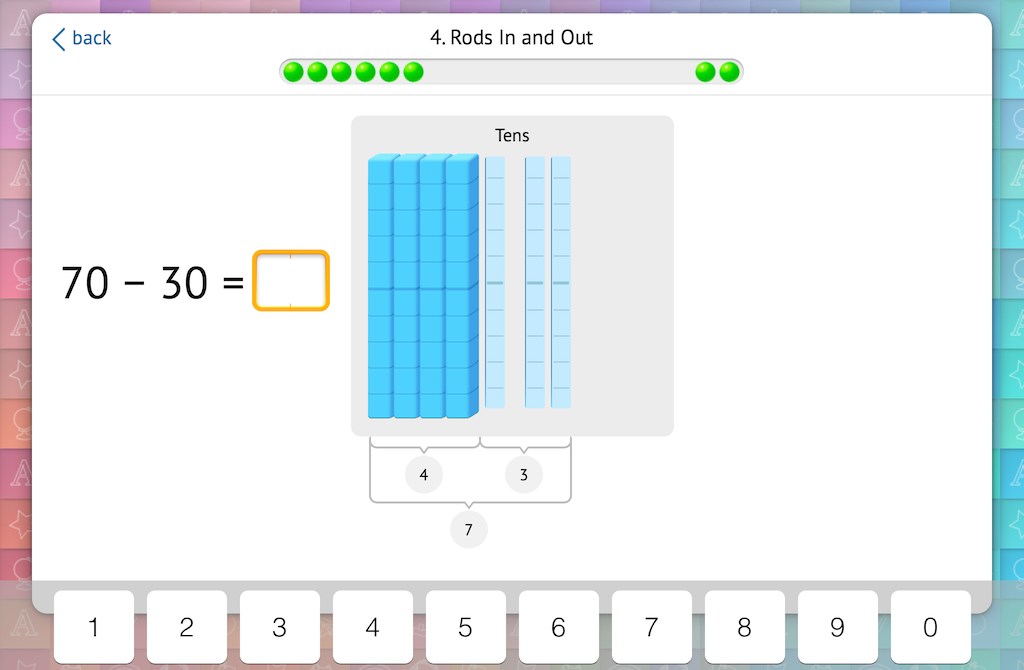
Step 3 moves students toward more abstract understanding by replacing cubes with animated number cues. First, the tens digits are isolated:

Then, students are prompted to add them:

Finally, students relate this simplified addition or subtraction problem to the original equation:

This last step of this exercise gives students a practical strategy for solving +/- of round numbers by showing that 60 + 20 is as easy as 6 + 2, while the first two steps give students a sense for the operations.
After learning how to add/subtract two round numbers, it’s time for students to learn what to do when one number is not round. Once again, this exercise approaches the skill in steps.
Step 1 demonstrates addition of a round number to a non-round number by showing both the equation and the model (with animation adding pink rods):
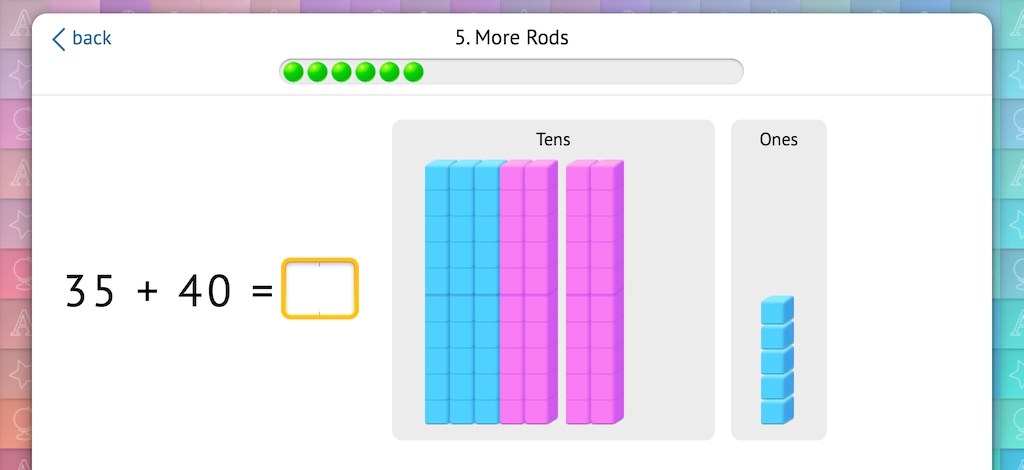
Once students see the equation modeled through animation, they are prompted to provide the sum. If they make an error, Happy Numbers will immediately provide scaffolding to help them arrive at the correct answer:
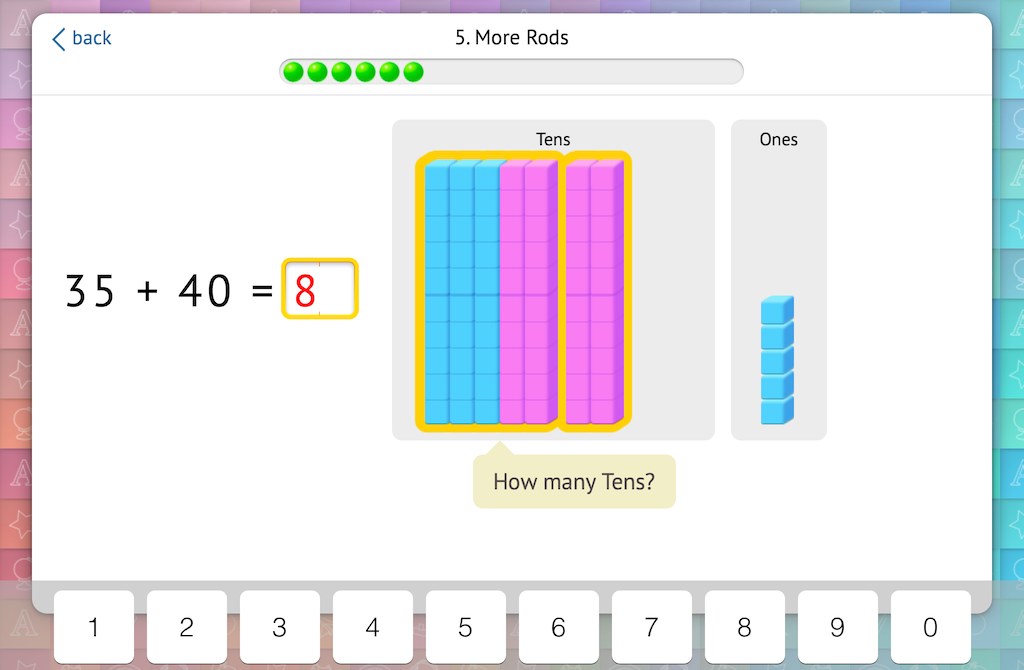
Step 2 is similar, but here students are first asked to enter the equation based on the model given:
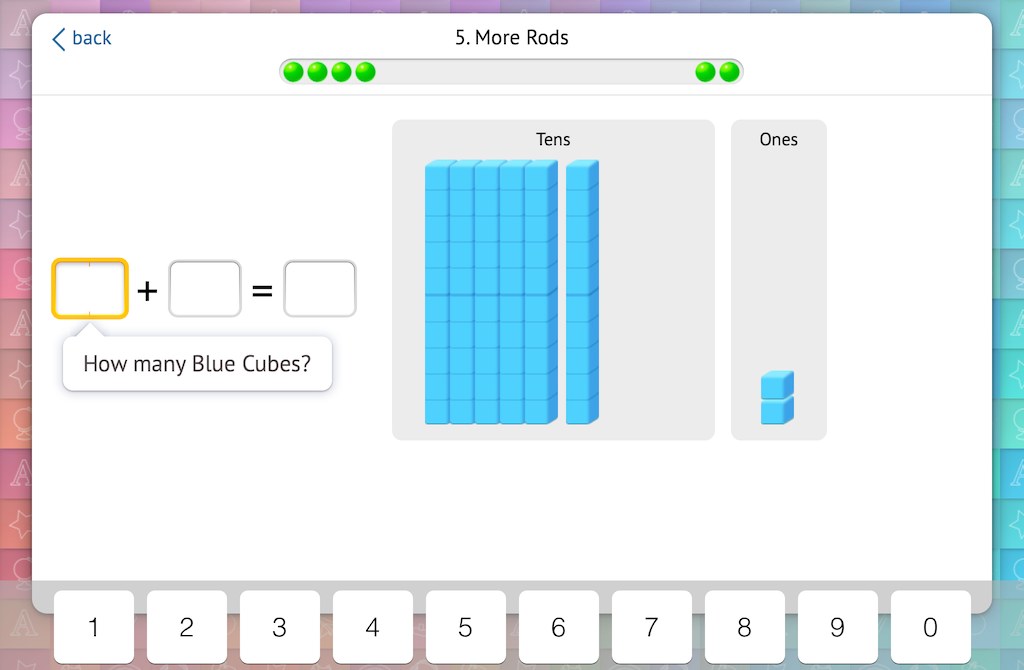
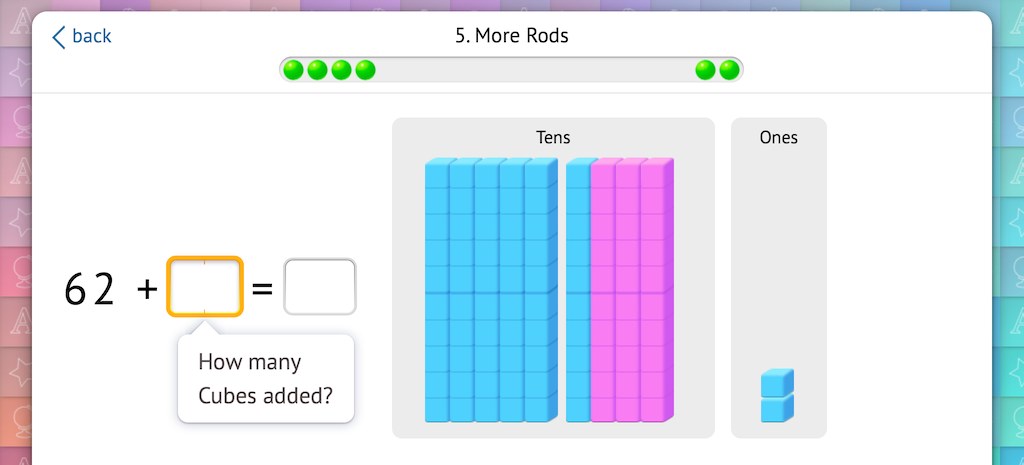
And then solve it as they had done previously:
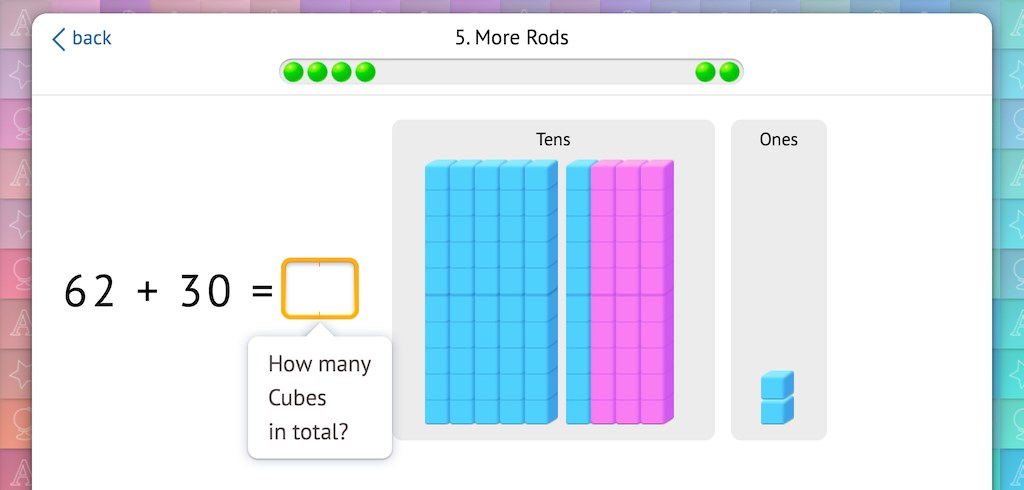
Yet another exercise follows the same format as the previous one, but uses subtraction:

Finally, several exercises help students review and reinforce addition and subtraction of round and non-round numbers. They are presented with equations to solve:

But are supported by cubes (scaffolding!), in case of an error:
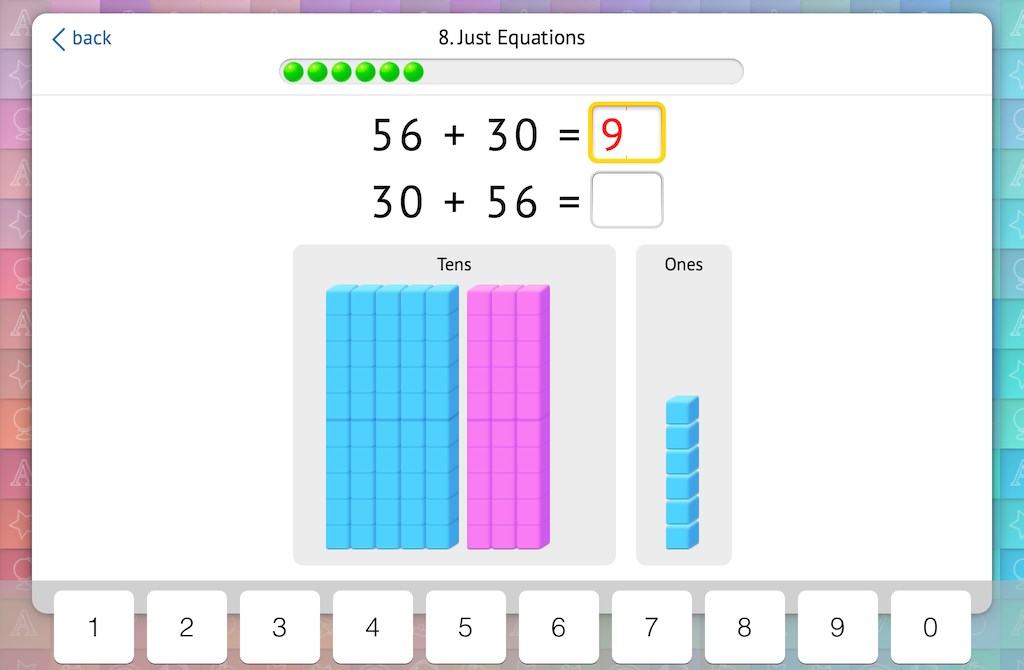
We also challenge their understanding by presenting them with non-traditional problems to solve. This exercise was designed specifically to help students understand the concepts behind 2-digit addition and subtraction. Rather than memorizing facts or teaching methods to solve equations, this exercise requires students to identify which method would be effective in solving the problem. This is a valuable skill, even if the method presented is not the one students may have used themselves to solve the problem:
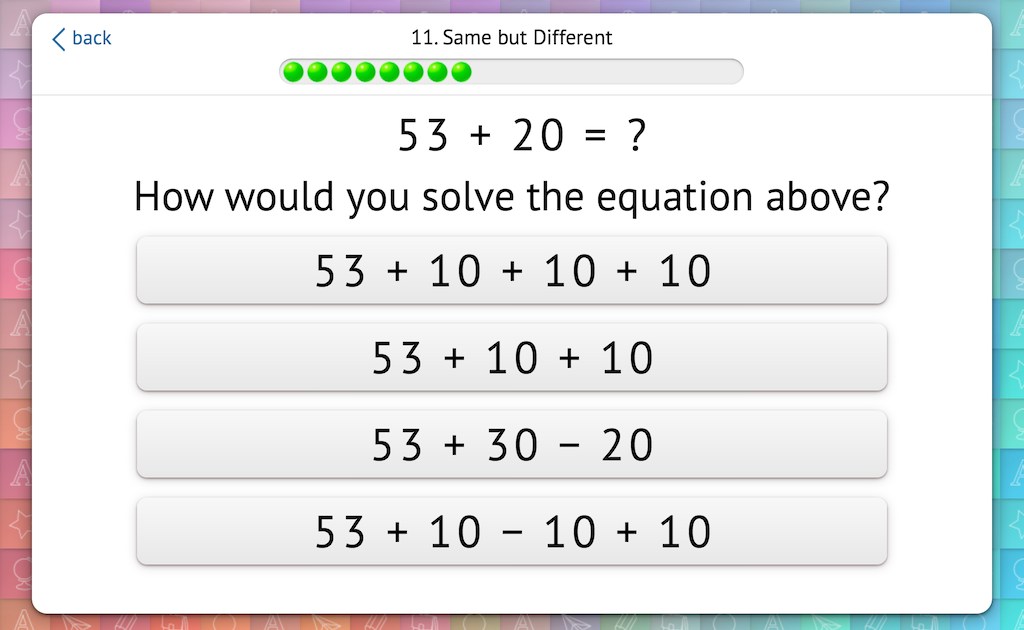
Once students select the correct method, they are asked to solve the equation:

If students choose an incorrect method, they are prompted to solve the equation, thus illustrating why it is incorrect. To do so, students must apply knowledge from previous learning:
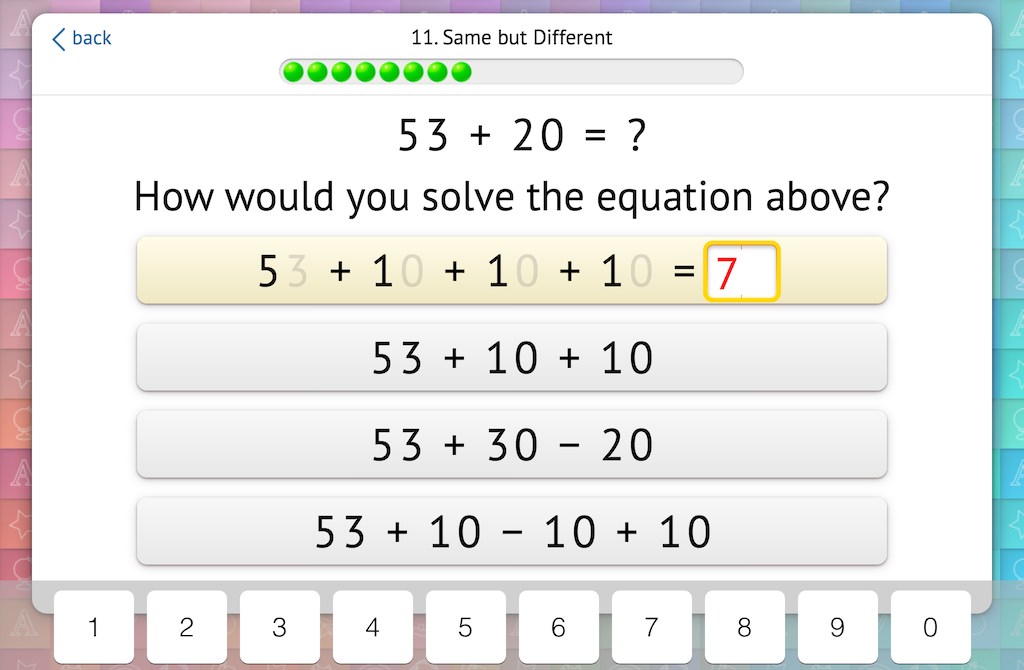
Another exercise challenges students’ thinking beyond just performing addition or subtraction. It actually helps students discover the relationships between addition and subtraction and understand that they are inverse operations.
First, Happy Numbers presents students with several addition problems, which reinforces skills learned in previous exercises:
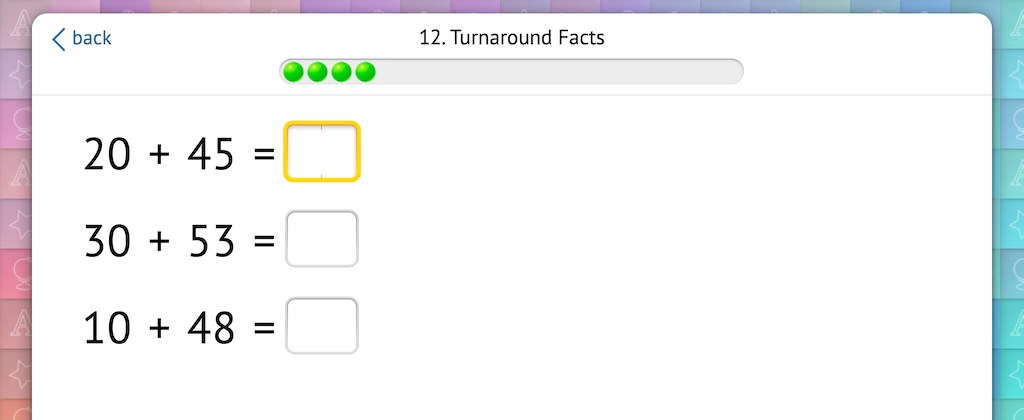
Once students solve those, they are presented with three subtraction problems, which, you may notice, have “something in common” with the three addition problems they just solved:
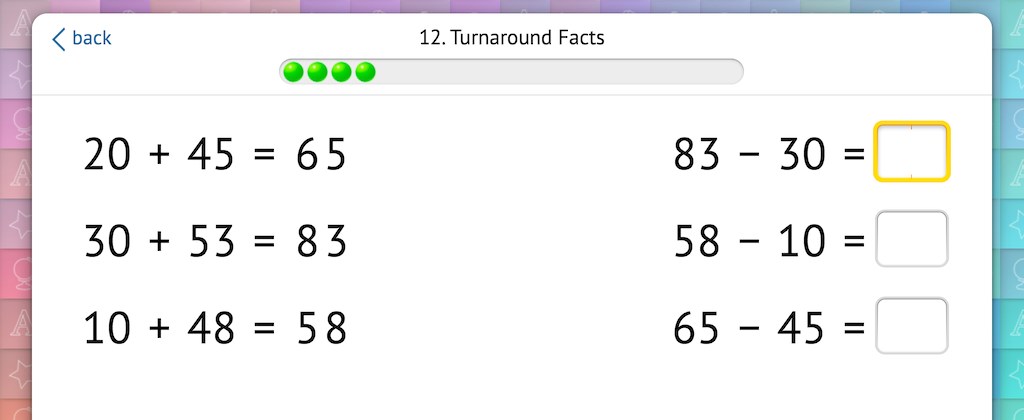
Finally, students are asked to match each addition problem with its related subtraction problem:

This leads students to discover fact families and to start thinking of subtraction as an inverse of addition!

Stage 3: Adding and Subtracting 2-Digit Numbers
We begin more complex 2-digit operations with non-round numbers that don’t require exchanging. Exercises focus on teaching students to add/subtract ones with ones and tens with tens to get an answer. Students explore the models behind such addition/subtraction problems as well as discover practical methods to solve them.
Step 1 presents students with an equation, which is modeled with cubes:

Happy Numbers uses animation to separate the first number into tens and ones, and then prompts students to do the same with the second number:

After that, students follow prompts to make sense of the newly combined rods and cubes:
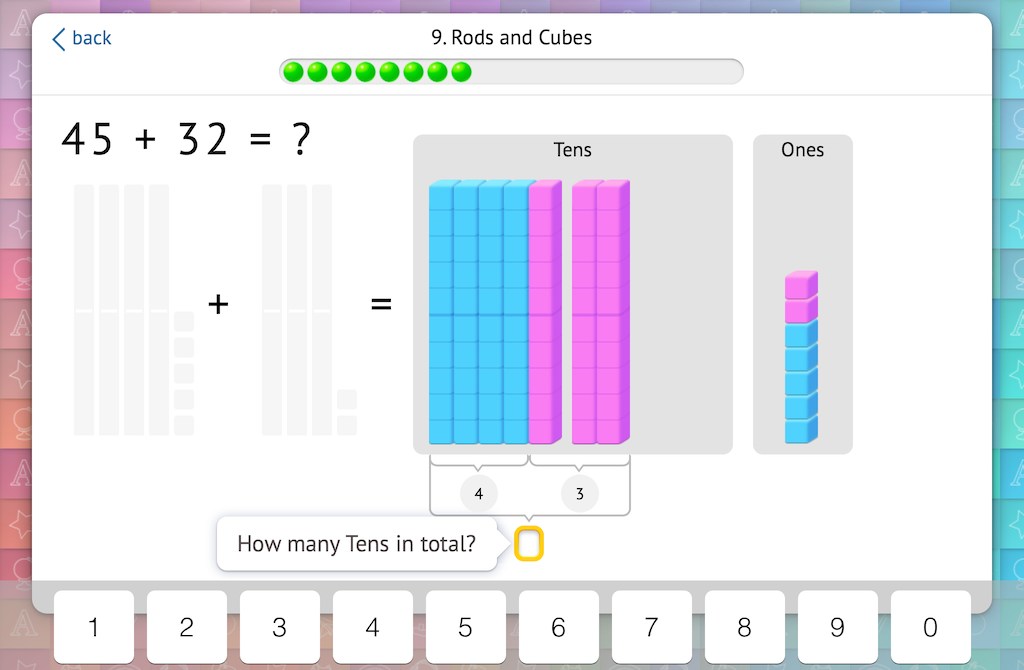
Finally, students use this information to solve the equation:
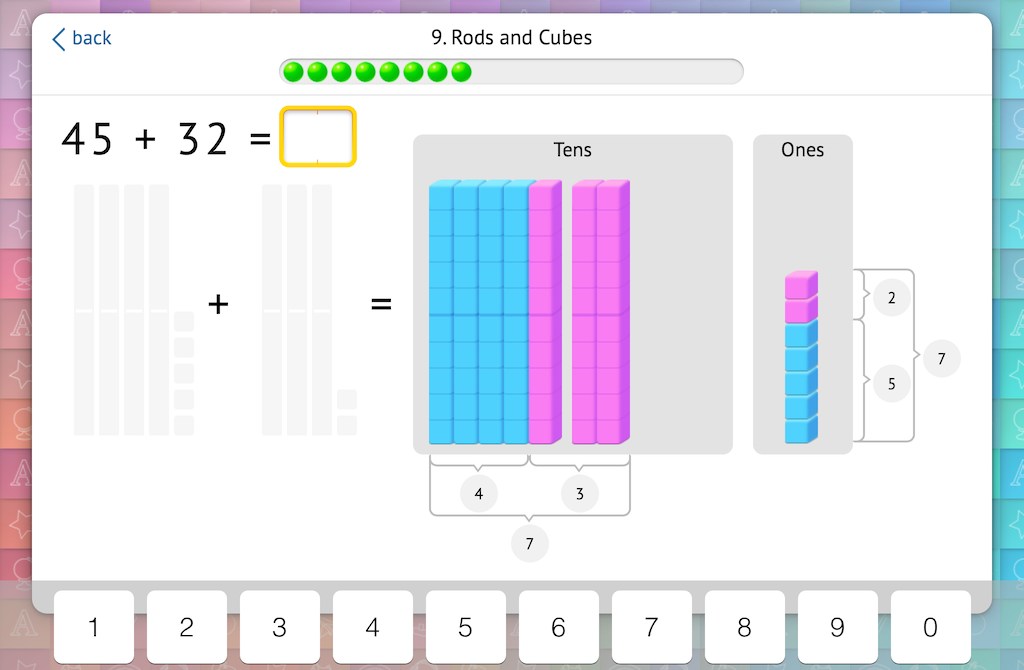
If their answer is incorrect, they are supported with highlighting that indicates the correct value:

Step 2 of this exercise provides cubes for the first number in the equation, but requires students to add on cubes to show the second number themselves:

Students then answer the original equation in similar fashion:
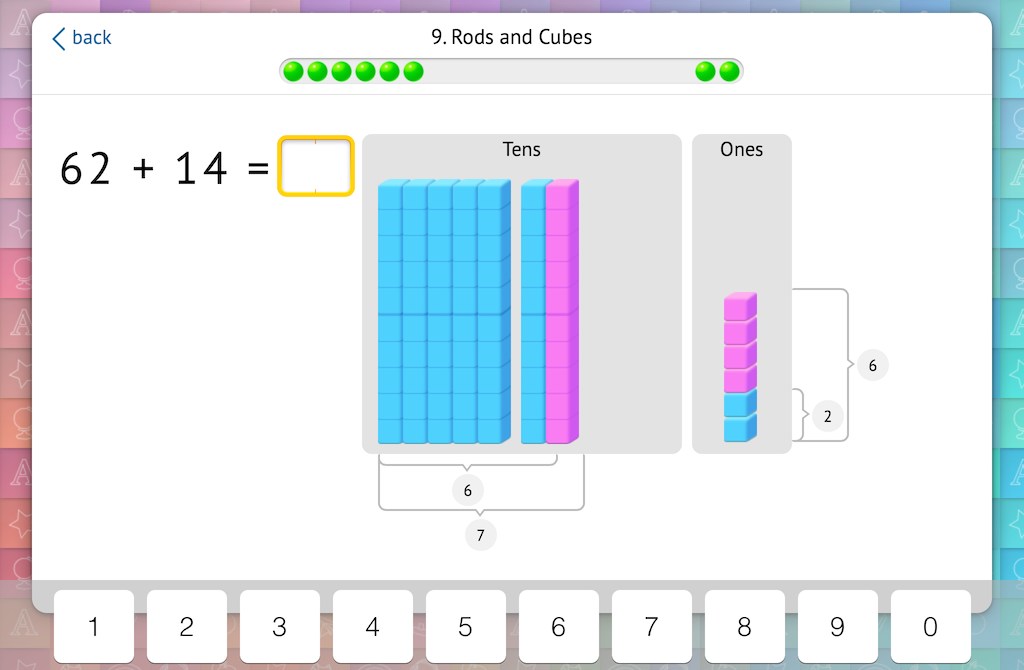
Step 3 presents just an equation:

But provides the cubes once again in case of an error:
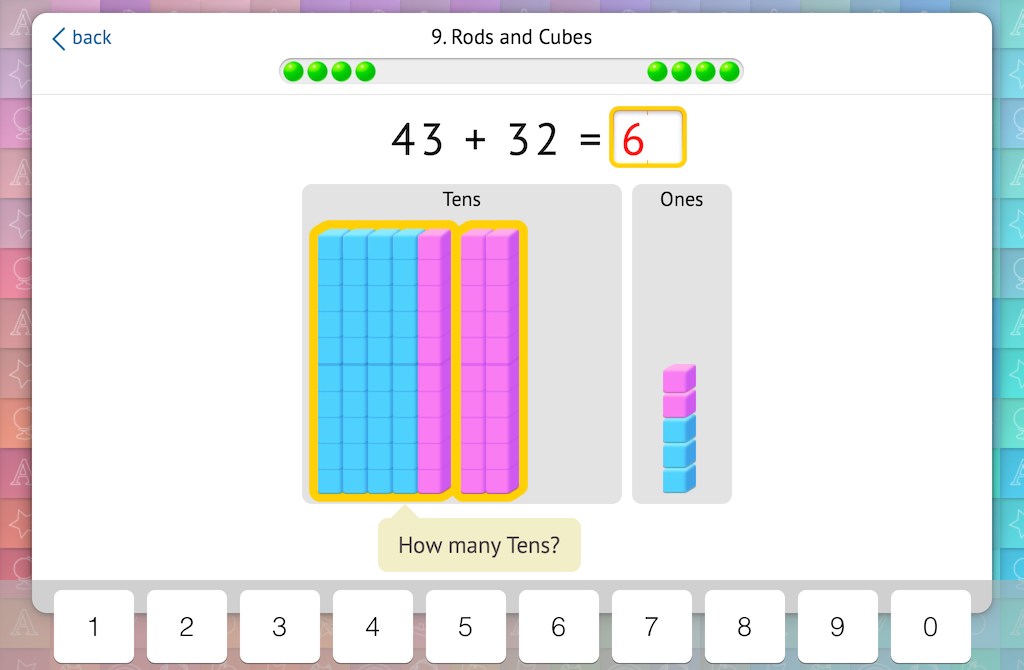
A similar exercise follows the same format, but uses subtraction:

Happy Numbers uses animation to model the “popping,” or subtraction, of cubes and rods.
Using knowledge gained from the previous exercises, it’s time for students to start using a practical strategy to add 2-digit numbers – adding tens with tens, and ones with ones.
First, Happy Numbers uses animation to demonstrate the strategy:
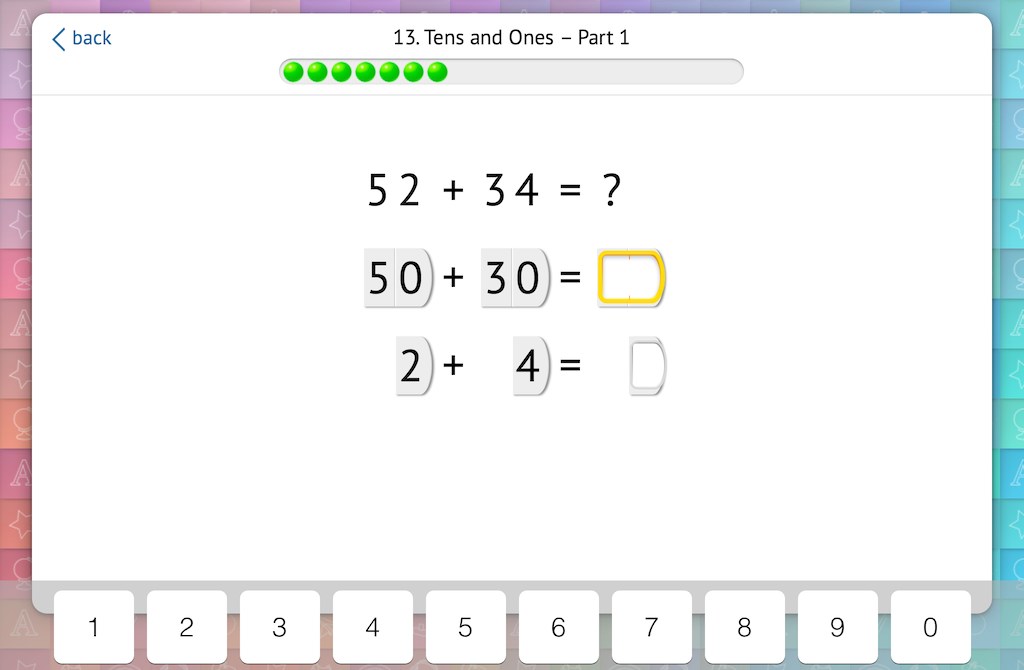
And then prompts students to use the strategy themselves:
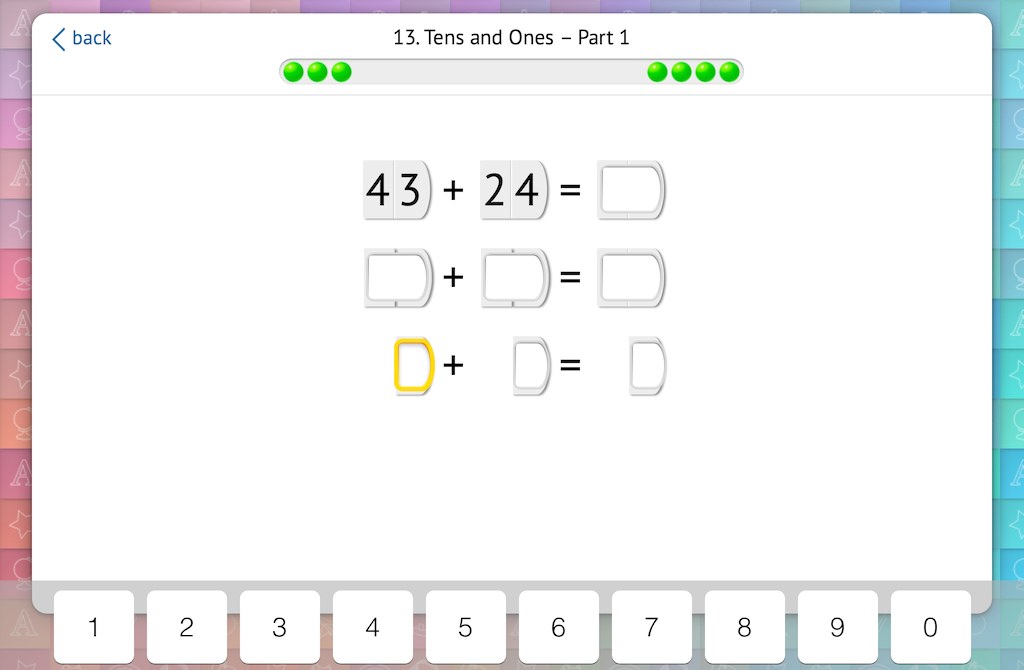
We present a similar exercise for subtraction:

Happy Numbers provides many other exercises to continue building fluency with 2-digit addition and subtraction. Once students demonstrate understanding of this concept, we branch off to explore another worthwhile and related concept – reaching 100. This special exercise is great for reinforcing how to make change from a dollar, among other skills.
We begin with an equation and model, similar to earlier exercises that taught students to add to reach a round number:

Students are prompted to add pink cubes to the model to reach 100. Then they determine the solution. Eventually, the model is taken away and students are presented with just an equation:

Of course, if they make an error, Happy Numbers provides the model once again:
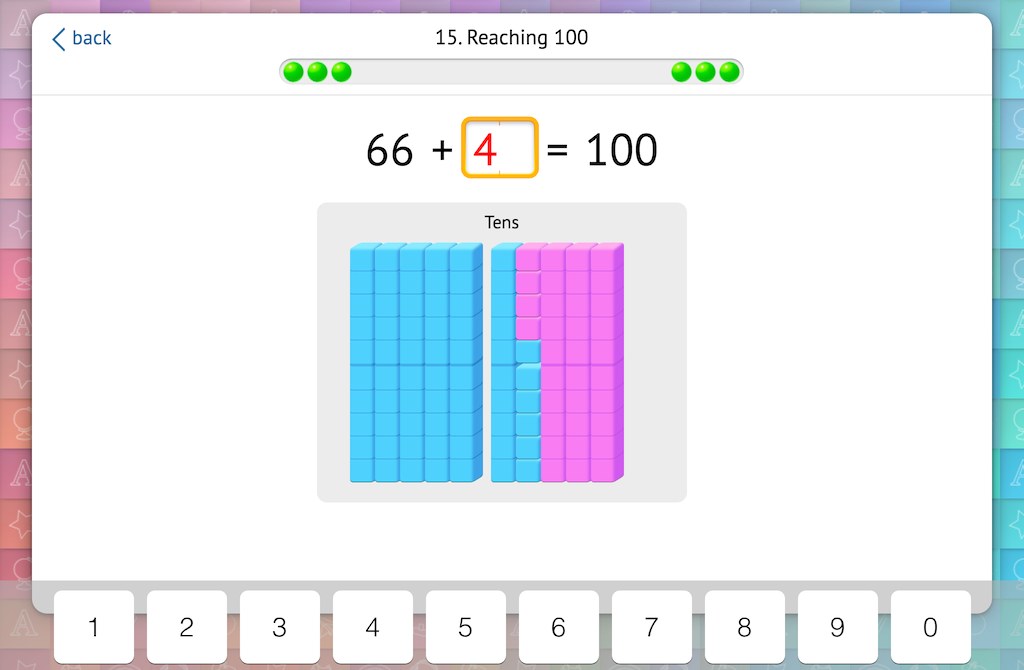
The previous exercise is then supplemented by a fun game-based exercise from our “UFO” series. Here, students build fluency in reaching 100 by finding pairs of addends that produce that sum:
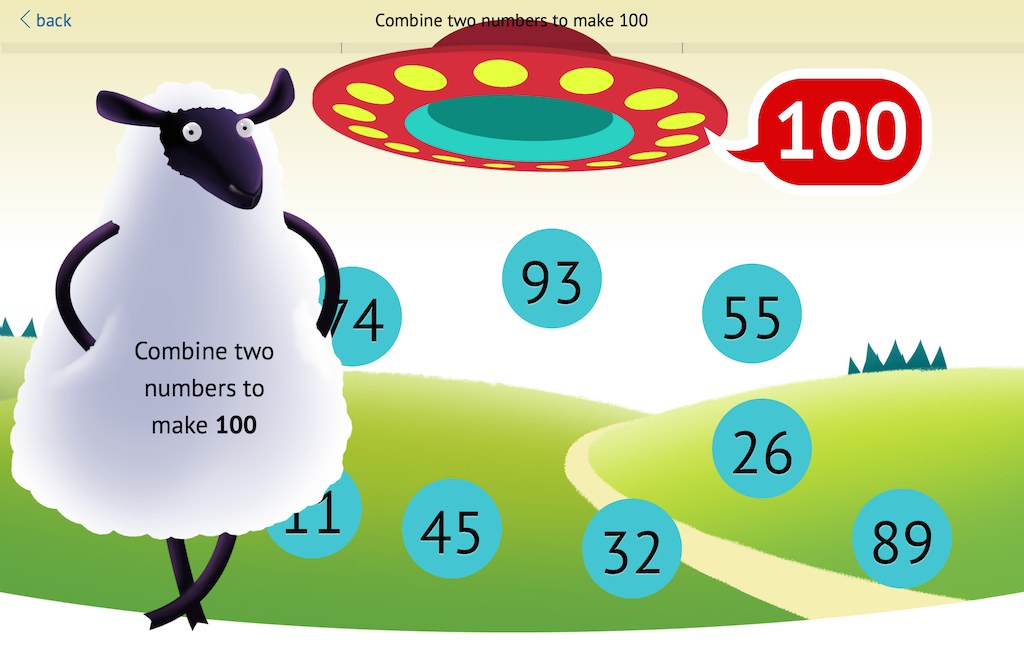
Happy Numbers provides a great introduction for your students to begin adding and subtracting 2-digit numbers. Throughout our many scaffolded exercises, they will develop new skills as well as conceptual understanding that will prepare them for addition and subtraction with regrouping or exchanging. Once your students have this foundation in place, be sure to have them continue on to our lessons involving exchanging!
—
Yours,
Happy Numbers Team
Yours,
Happy Numbers Team
